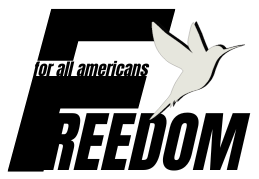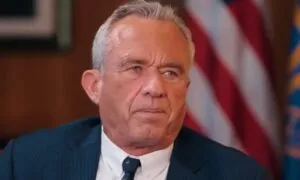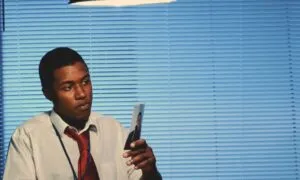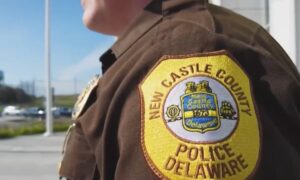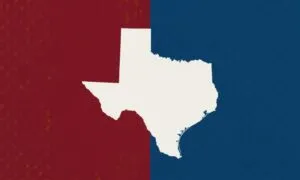If you’re thinking about trading in your U.S. zip code for a life down under, you’re not alone. Every year, thousands of Americans make the move to Australia, drawn by the country’s stunning natural landscapes, laid-back lifestyle, and strong job market.
But before you jump on a one-way flight, there’s quite a bit to sort out, from paperwork and budget planning to cultural expectations and daily life differences.
Let’s walk through what it really takes to prepare for life in Australia as a U.S. citizen. Just the things you’ll wish someone had told you earlier. Let’s get into it.
Table of Contents
ToggleKey Highlights
- Living in Australia is expensive, especially in cities like Sydney and Melbourne.
- You’ll need a valid visa, and most long-term options require paperwork like health checks and job proof.
- Job markets favor skilled workers in healthcare, tech, and trades.
- Culture is casual, bring your own drinks to a BBQ, and don’t overdo tipping.
Cost of Living
Australia is known for its high quality of life, but it doesn’t come cheap. Especially if you’re aiming for Sydney or Melbourne, prepare your wallet for a reality check.
Housing Costs
The biggest slice of your monthly budget will likely go to rent. Here’s what you’re looking at:
| City | 1-Bedroom Apartment (USD/month) |
| Sydney | ~$2,000 |
| Melbourne | ~$1,400 |
| Adelaide/Perth | $1,300–$1,700 |
Rent doesn’t usually include utilities, and you’ll often need to pay a security deposit (called a “bond”) worth 4–6 weeks’ rent. Most leases are 6 or 12 months, and short-term rentals are harder to come by outside of holiday towns.
Daily Life Expenses
- Monthly living costs (excluding rent): Around $1,105 for a single person or $3,914 for a family of four.
- Groceries: Expect prices similar to the U.S. or slightly higher, especially for fresh produce and meat.
- Utilities: Typically billed quarterly. Electricity and internet can run $100–$150 USD/month each.
Getting Around
Cities like Melbourne, Sydney, and Brisbane have solid public transport networks. If you’re not driving, it’s easy to get around without a car.
- Bus, tram, or train ticket: ~$2 USD
- Day pass: ~$5 USD
- Taxi base fare: $1–$2 USD + $1 USD per kilometer
- Domestic flights: $40–$200 USD depending on route and timing
If you plan to drive, rental cars start around $17 USD per day. Just note that if you’re under 25, you’ll likely pay more.
Moving Costs

Relocating overseas isn’t a weekend project. You’ll want to brace yourself for upfront expenses that range between $10,000 and $20,000 USD, depending on how much you’re bringing.
Here’s how the cost breaks down:
- Flights (one-way): $1,000–$2,000
- Shipping household items: Sea freight costs $3,000–$8,000 for a 20-foot container (about a two-bedroom apartment’s worth)
- Temporary housing: Airbnb or short-term rentals will add up fast, so book only what you need and start looking for long-term housing early.
If you’re moving for work, some employers will cover part of your relocation package – worth asking about.
What Work Looks Like
Salaries in Australia are generally competitive, especially in high-demand fields. The average salary sits around $91,550 AUD, or $64,000 USD, and many industries are eager to hire skilled workers from abroad.
In-demand sectors:
- Healthcare (nurses, doctors, aged care)
- Tech and IT
- Construction
- Education
- Hospitality and tourism
Job hunting platforms like Seek or LinkedIn Australia are your best options here. And if you’re applying for a skilled visa, you might need a formal skills assessment or a job offer in hand.
Visa Basics – Don’t Skip This

You’ll need a valid visa to live in Australia, no matter how casual your move feels. For short stays (under 3 months), you can use the Electronic Travel Authority (ETA) via the Australian ETA app, which costs about $14 USD.
For longer-term relocation, check out:
- Skilled migration visas
- Student visas
- Family sponsorship visas
- Business and investor visas
Apply through the ImmiAccount portal. Be prepared to submit:
- Valid U.S. passport
- Proof of funds or employment
- Health check documentation
- Police clearance
- Biometric data (sometimes)
Tip: Only use official .gov.au websites or licensed migration agents. The OMARA website lists registered professionals; don’t fall for scams.
Financial Prep

Before you step off the plane, take a few smart steps to make managing your finances easier.
Set up a bank account
Major banks like Westpac, ANZ, and Commonwealth Bank let you open accounts online before you arrive. That means you can hit the ground running and even transfer funds early to avoid foreign transaction fees.
Learn the tax system
If you’re earning income in Australia, you’ll need a Tax File Number (TFN) from the Australian Taxation Office (ATO). The U.S. and Australia have a tax treaty to avoid double taxation, but it’s worth consulting a tax professional to understand your situation.
Health insurance
Unless you’re on a visa that qualifies for Medicare, Australia’s public healthcare system, you’ll need private health insurance. Even with Medicare, many locals carry private coverage to avoid long wait times and access private hospitals.
Check your visa conditions carefully; some types require proof of insurance before entry.
If you’re injured and need medical treatment before Medicare kicks in, you might also consider legal cover – Smiths Lawyer can help manage any recovery-related claims.
Renting and Housing Tips

The rental market moves fast, especially in big cities. Listings can disappear within hours, and inspections are often group-based and competitive.
Here’s how to boost your chances:
- Have all your documents ready (passport, visa, proof of income, references)
- Get a local phone number ASAP
- Be prepared to pay the bond + first month’s rent immediately
If you’re priced out of Sydney or Melbourne, don’t panic—cities like Adelaide, Brisbane, and Perth offer a slower pace, more space, and lower rents.
Adapting to Australian Culture
Australians are warm, easygoing, and love a good laugh, but social norms can still catch you off guard if you’re not prepared.
Common Social Etiquette
- Keep things casual: First names are used almost immediately.
- Don’t brag: Humility is valued, and arrogance turns people off.
- Personal space matters: Avoid standing too close or showing up unannounced.
- Gifts: Bring wine, flowers, or chocolates when invited to someone’s home.
At the BBQ (or “barbie”)
If you’re invited to a barbecue, which is a regular weekend affair, don’t show up empty-handed. Bring your own drinks or something to toss on the grill.
Restaurants and Tipping
In most cases, people split the bill, and tipping isn’t expected. That said, if you get exceptional service, rounding up a few dollars is appreciated.
Respect for Indigenous Culture
Australia is home to one of the world’s oldest continuous cultures. Aboriginal and Torres Strait Islander communities have lived on the continent for over 60,000 years.
Showing respect matters. That can mean:
- Visiting cultural centers like AIATSIS
- Learning the traditional names of places
- Attending Indigenous-led events and museums like MONA
Take time to learn the local history, it’ll enrich your experience and show respect for the people who were here long before us.
Lifestyle and Free Time
Australia is all about the outdoors. Whether you’re into surfing, hiking, wine tasting, or art festivals, you’ll never run out of things to do.
Popular spots:
- Great Ocean Road – stunning coastal drive
- Great Barrier Reef – snorkel heaven
- Blue Mountains – world-class hikes near Sydney
- Uluru – sacred red rock at the heart of the country
Sports are also a huge deal—especially cricket, tennis, and “footy” (Australian Rules Football). Even if you’re not a fan now, don’t be surprised if you start yelling at the TV during AFL season.
Practical Tips Before You Move

A few final things that make settling in easier:
Checklist
| Step | Key Actions |
|---|---|
| Visa | Apply early; use ETA app or ImmiAccount |
| Jobs | Check Seek for openings in healthcare, tech, etc. |
| Finances | Set up a bank account and sort out taxes |
| Housing | Have documents ready for rentals; research neighborhoods |
| Health Insurance | See if you qualify for Medicare; otherwise, get private coverage |
| Driving | U.S. licenses valid for 3 months; convert after that if staying longer |
| Community | Join InterNations or local expat Facebook groups |
| Emergency Numbers | 000 is the number for police, fire, and ambulance |
Wrapping Up
Moving to Australia as a U.S. citizen is exciting, and totally doable if you’re prepared. Start with the visa, line up your job prospects, sort out your finances, and brush up on cultural cues.
Costs are high, but so is the quality of life. If you take it step by step, you’ll be better equipped to enjoy the move instead of stressing over the fine print.
There’s no single “right” way to relocate, but one thing’s for sure: preparation makes everything easier. And who knows, before long, you might be ordering “brekkie” at a café in Brisbane like you’ve been there forever.
Ready to pack?
Related Posts:
- Safest Countries in the World in 2025 - GPI…
- Capital Cities in Europe: Top Destinations For You…
- 26 Most Dangerous Cities in US - Updated Statistics for 2025
- America's Murder Capitals: A 2025 Ranking of the…
- CLARITY Act in the US Senate Could Redefine Digital…
- 20 Best Zoos in the US Worth Visiting in 2025
